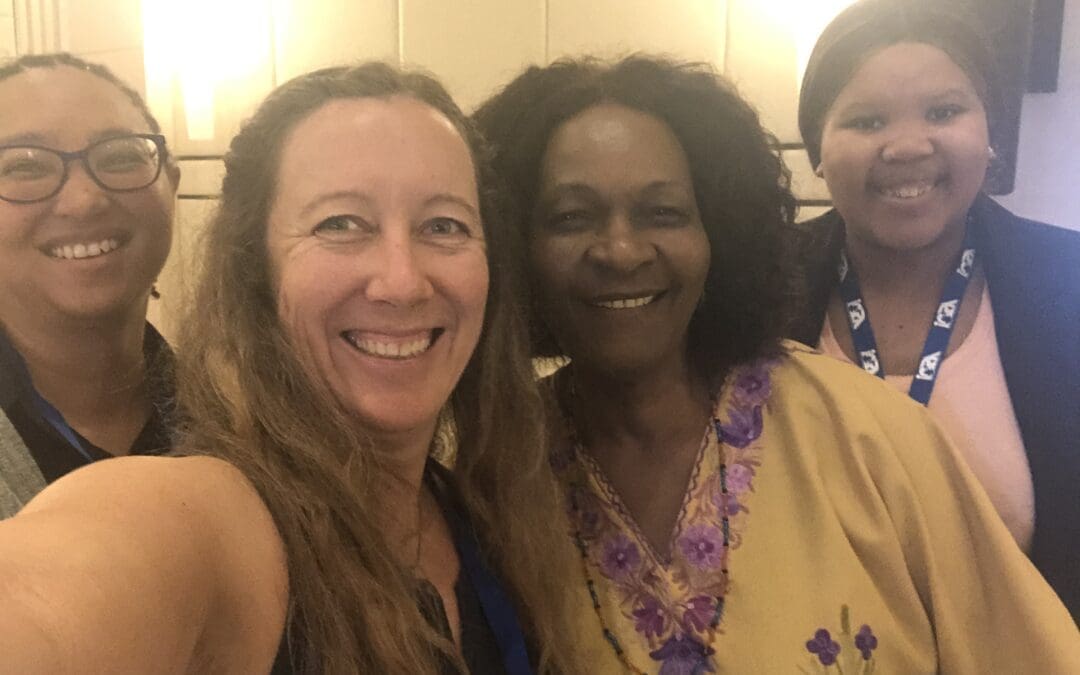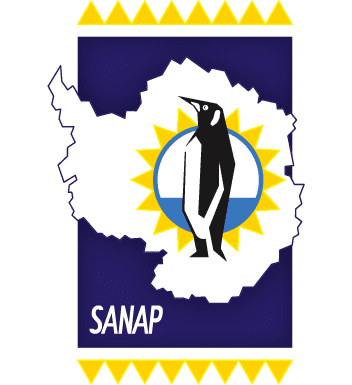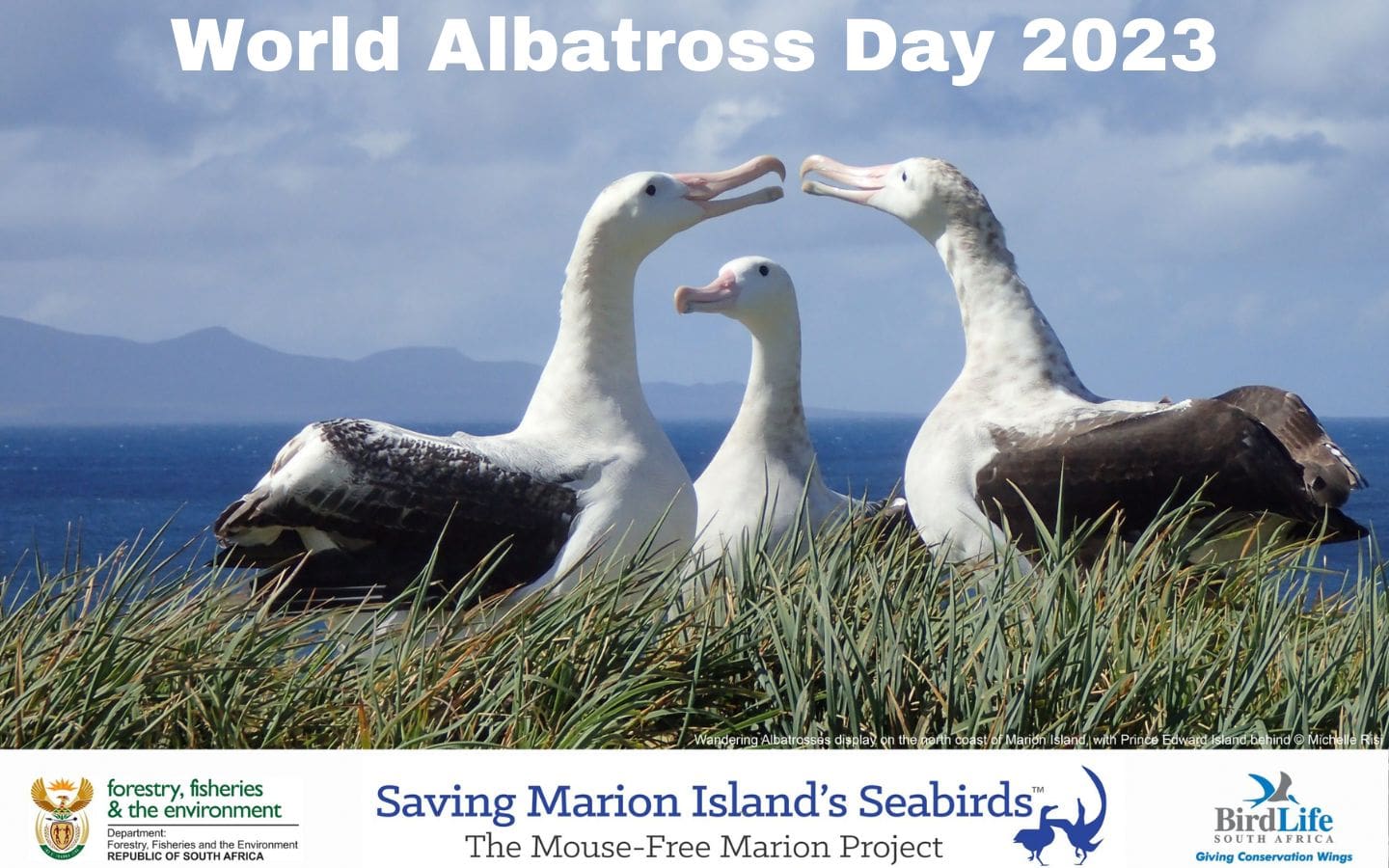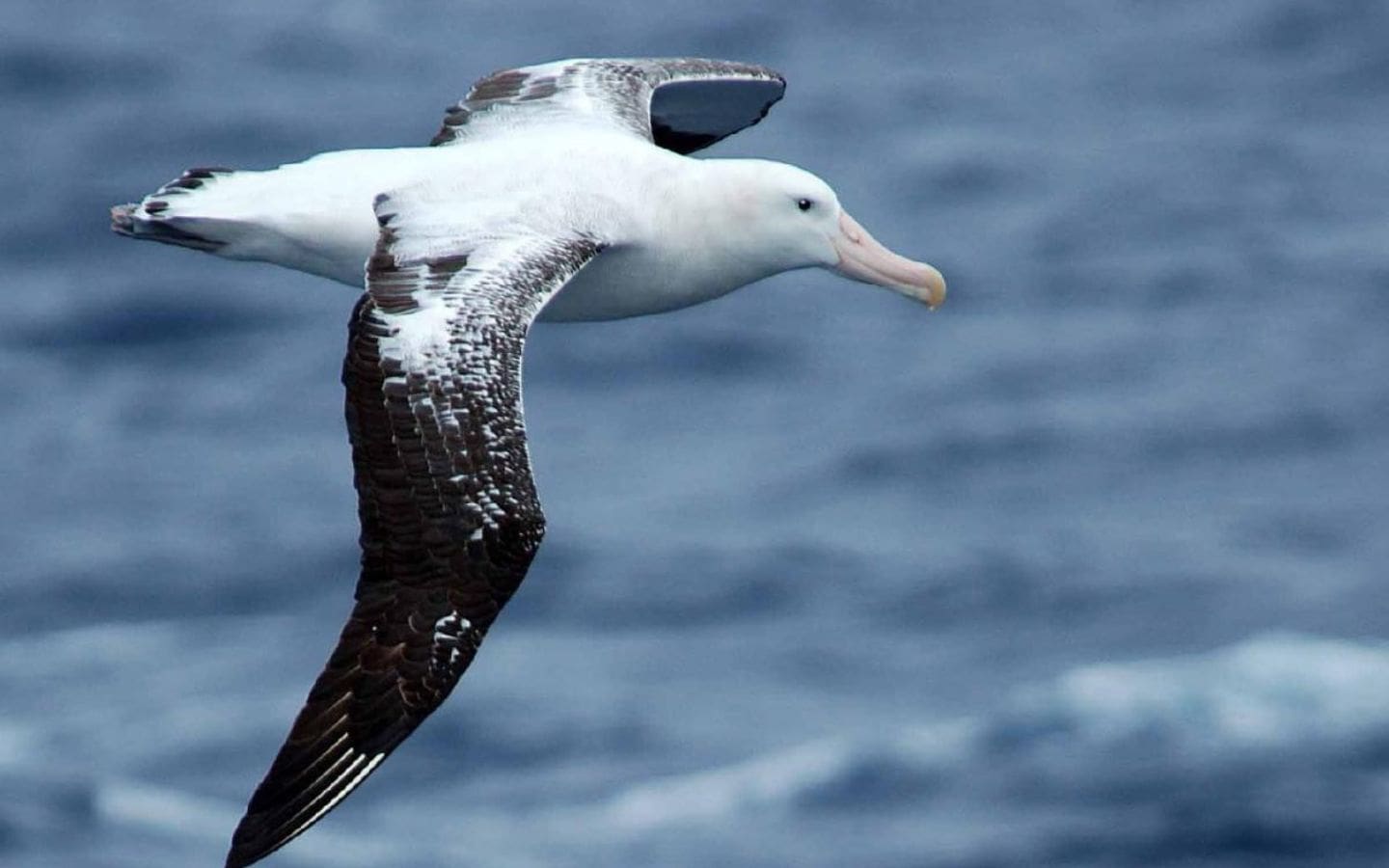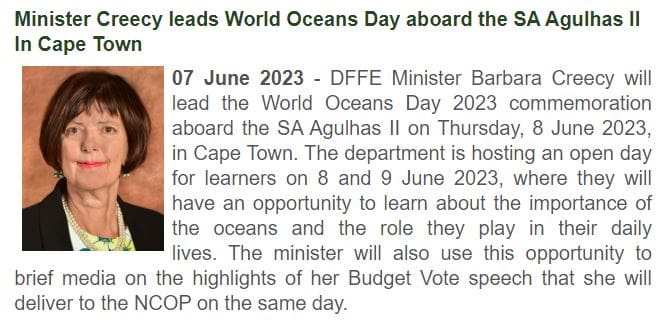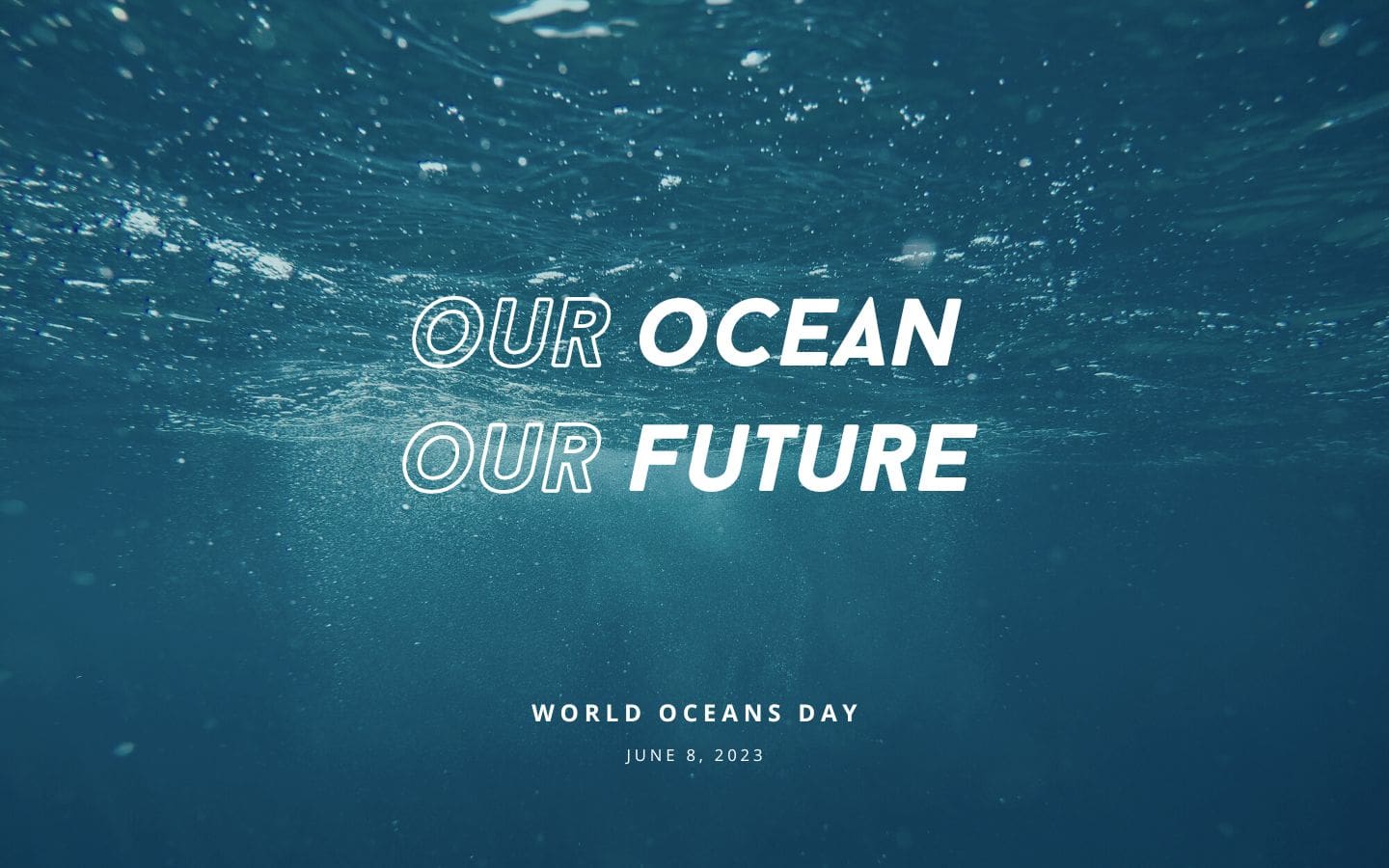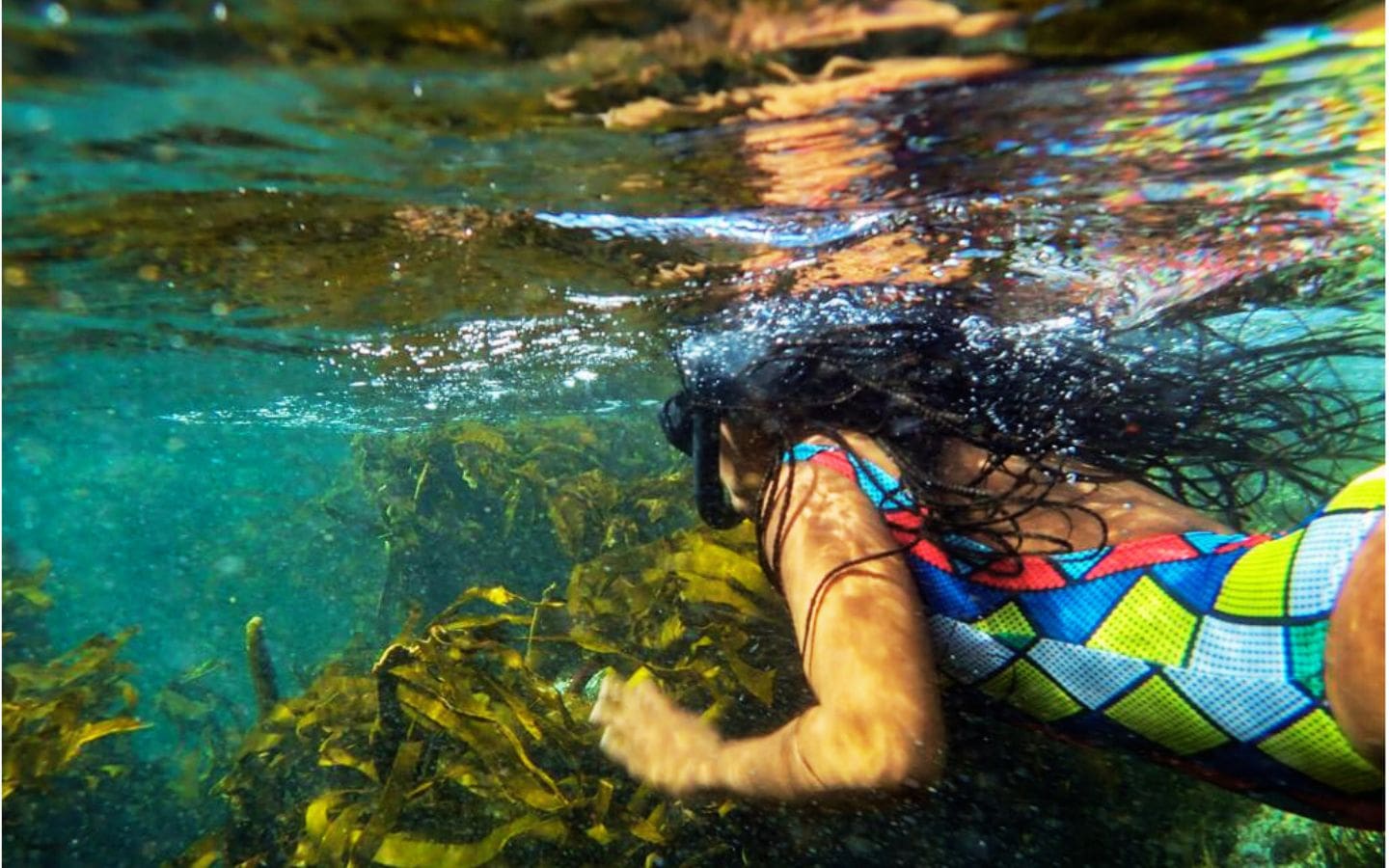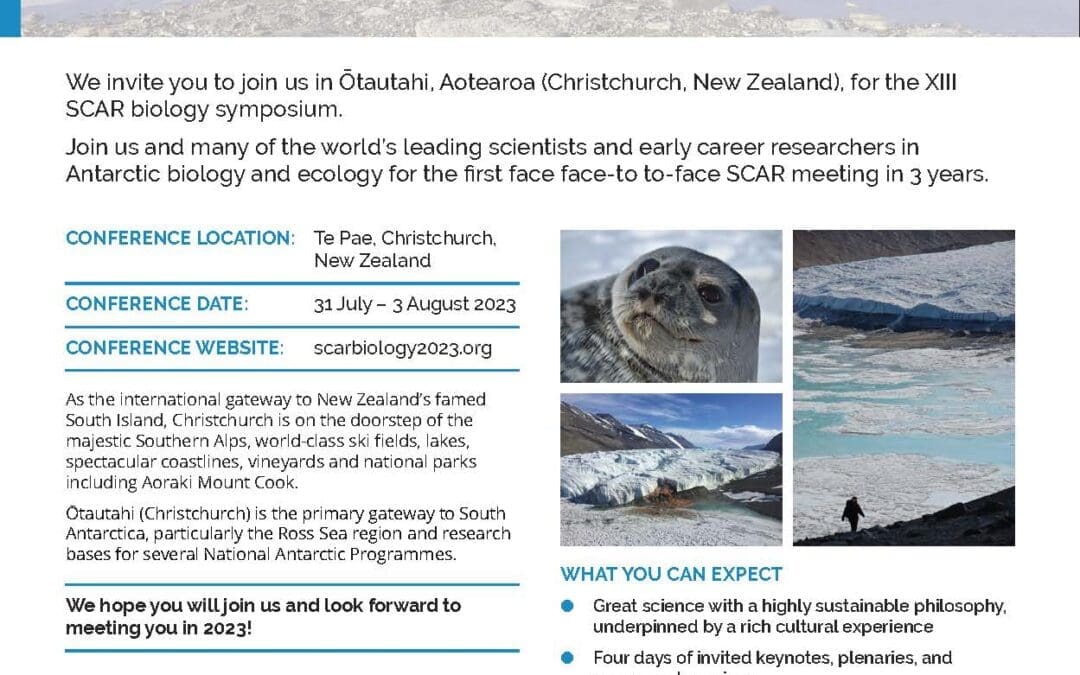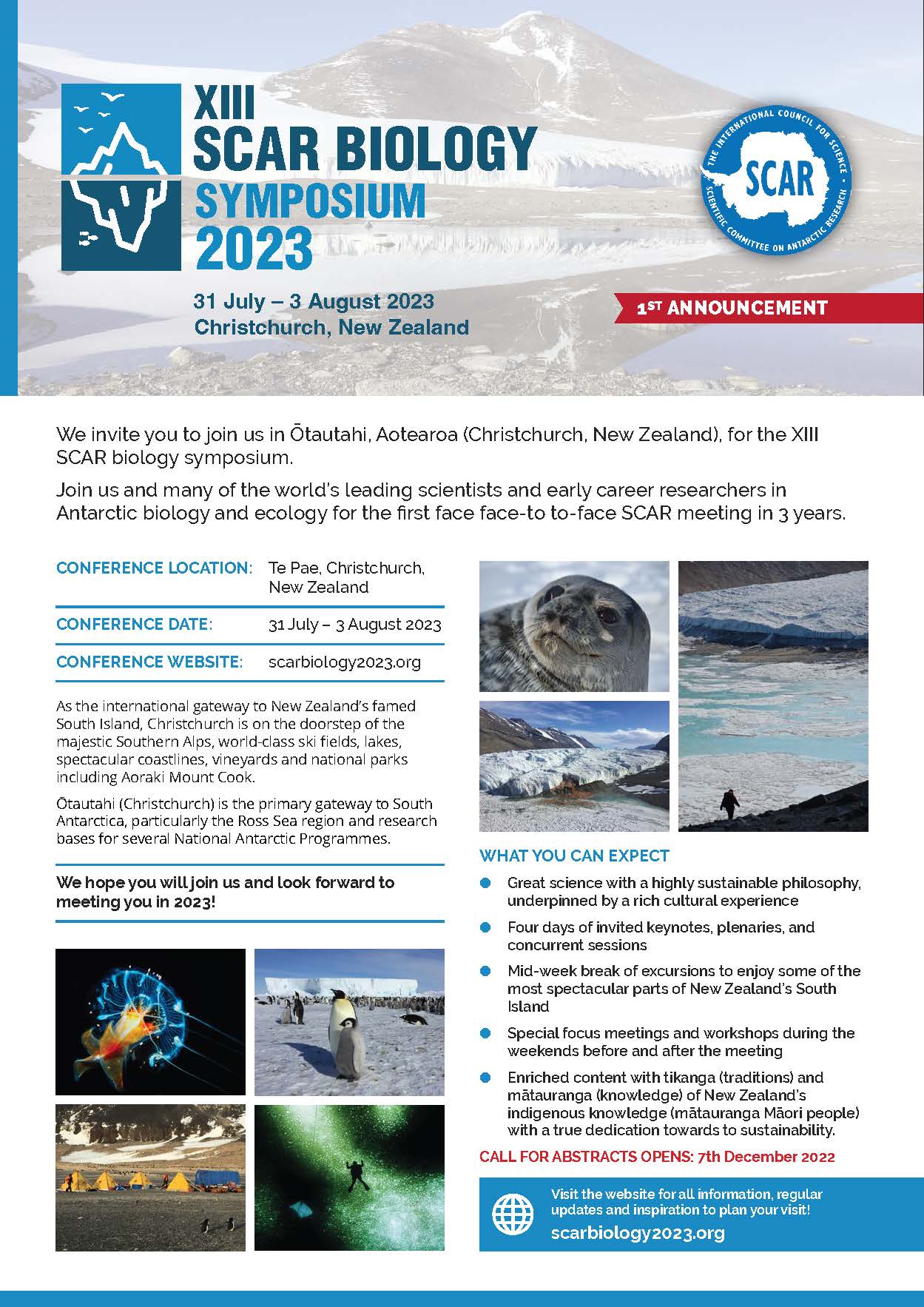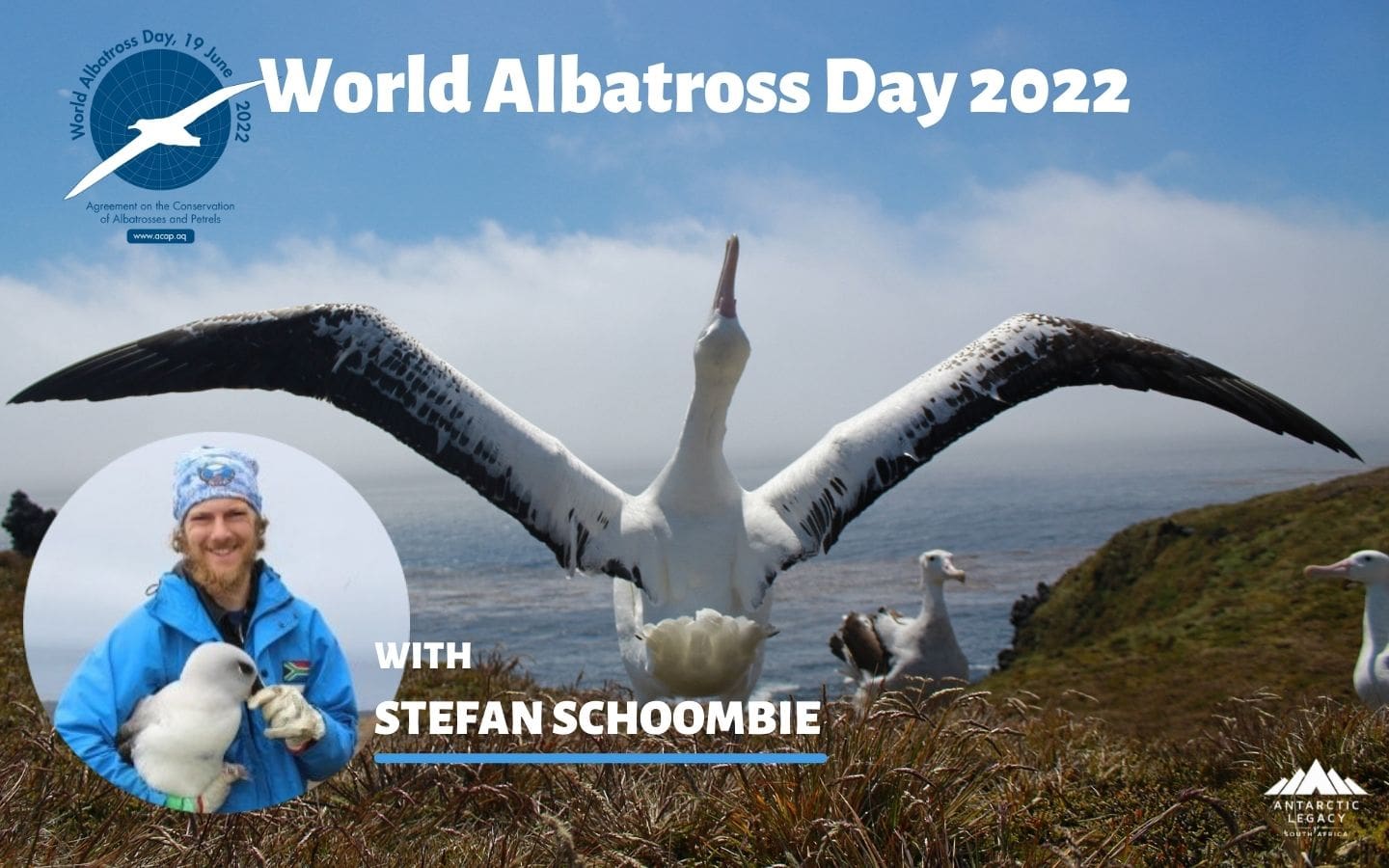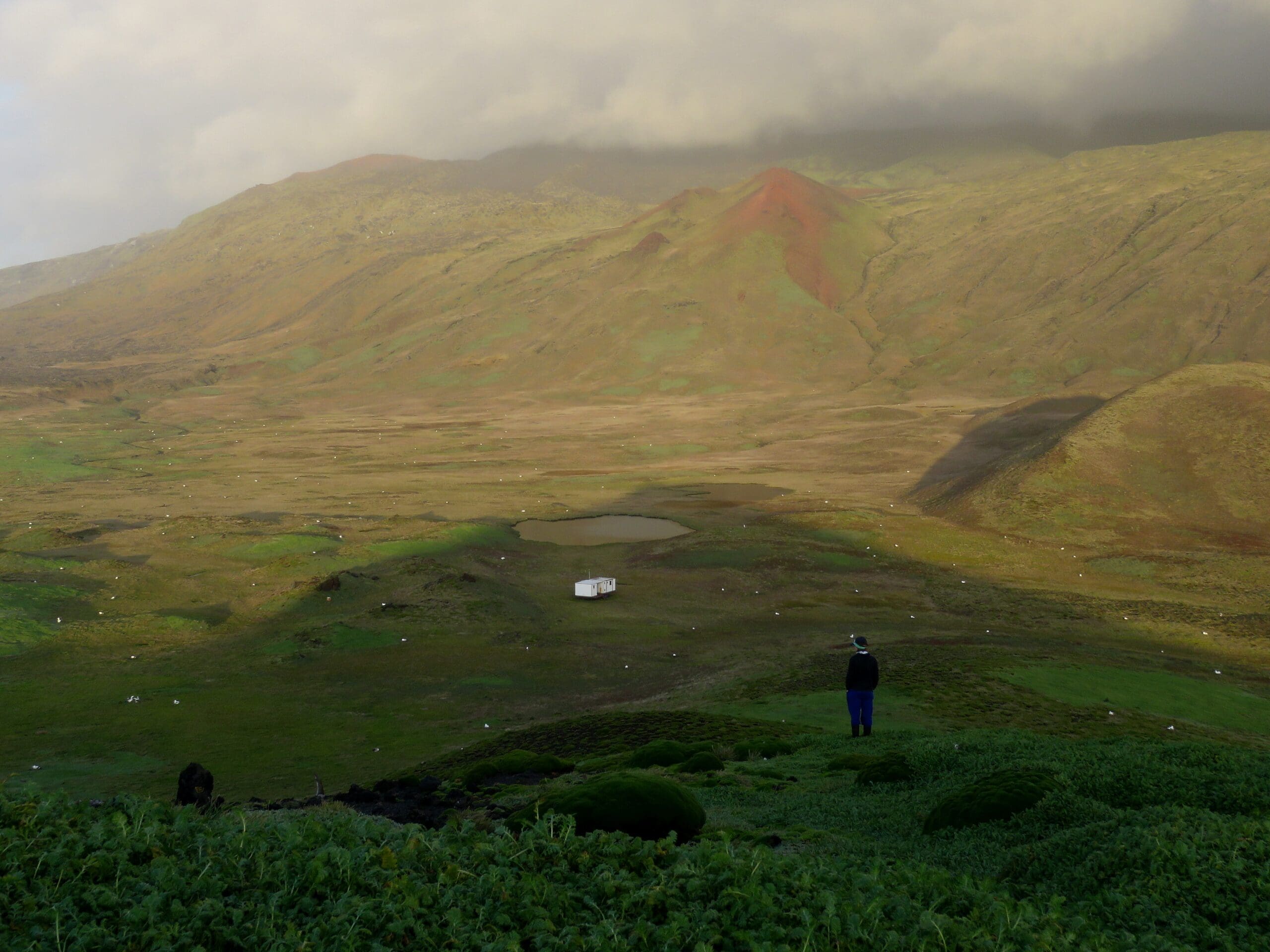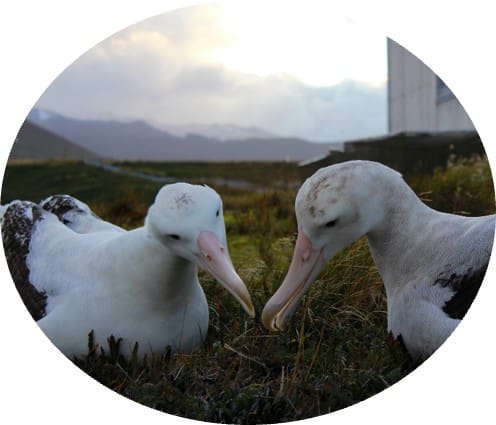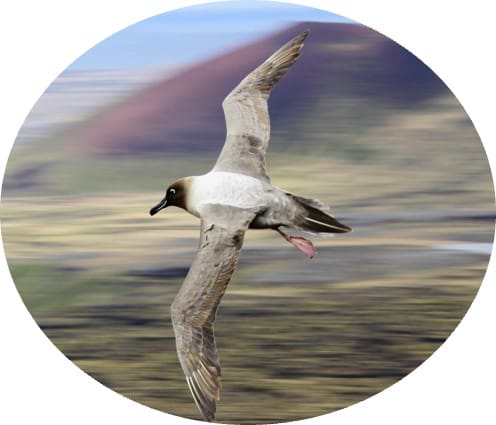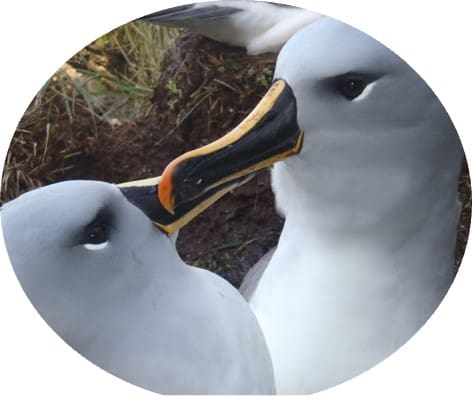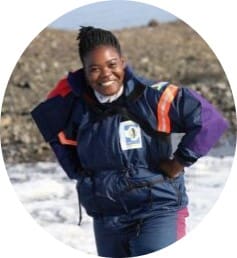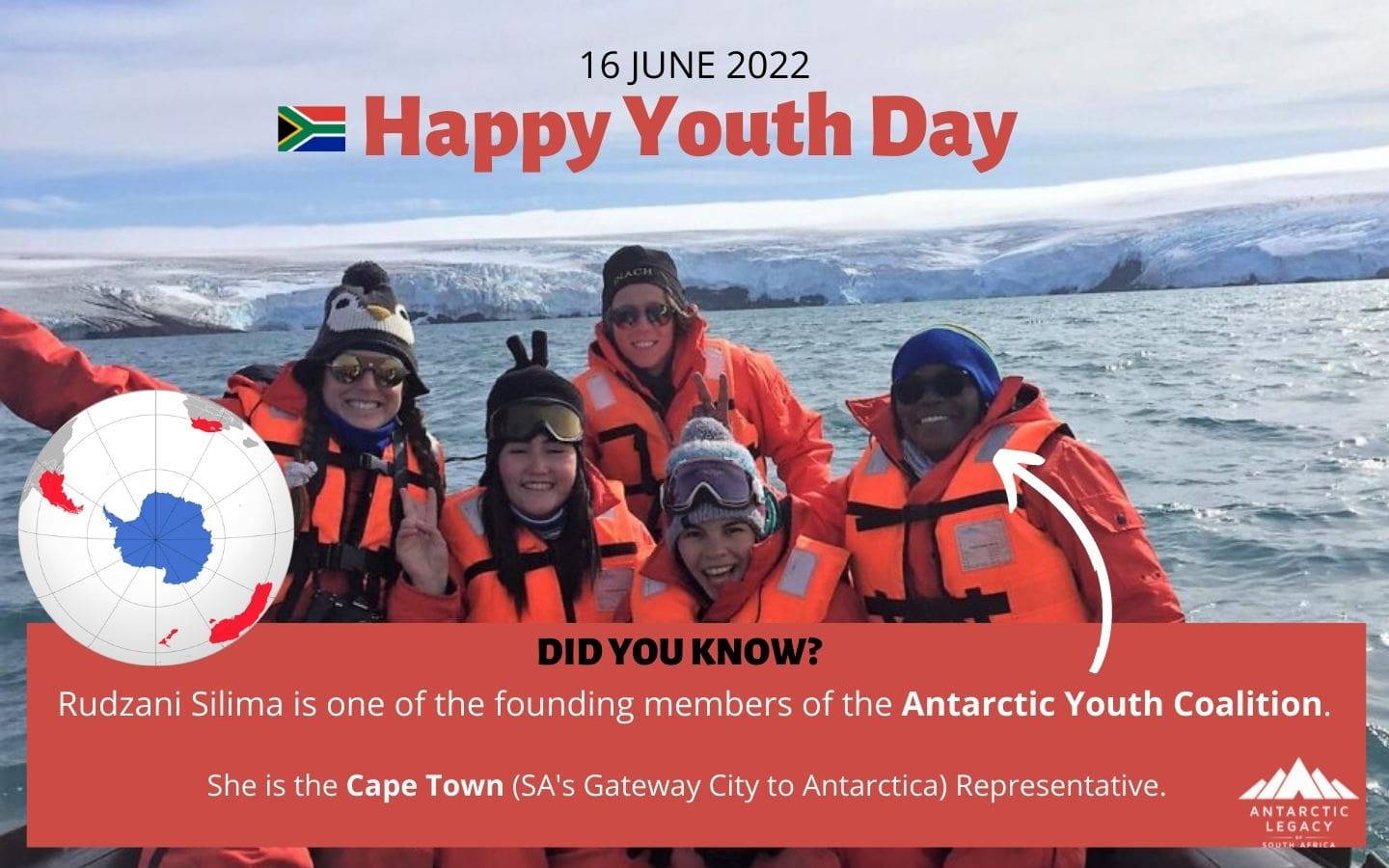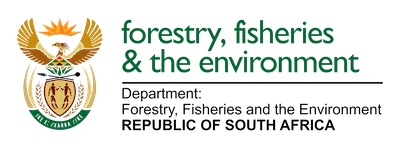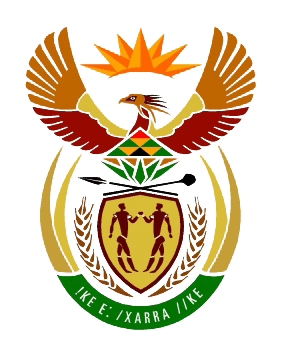
by Ria Olivier | Aug 9, 2023 | Commemorative Days, Important Dates, News, Research, SA Polar Research Infrastructure, SAPolarRI, SAPRI, Science, Southern Ocean, Women in Science
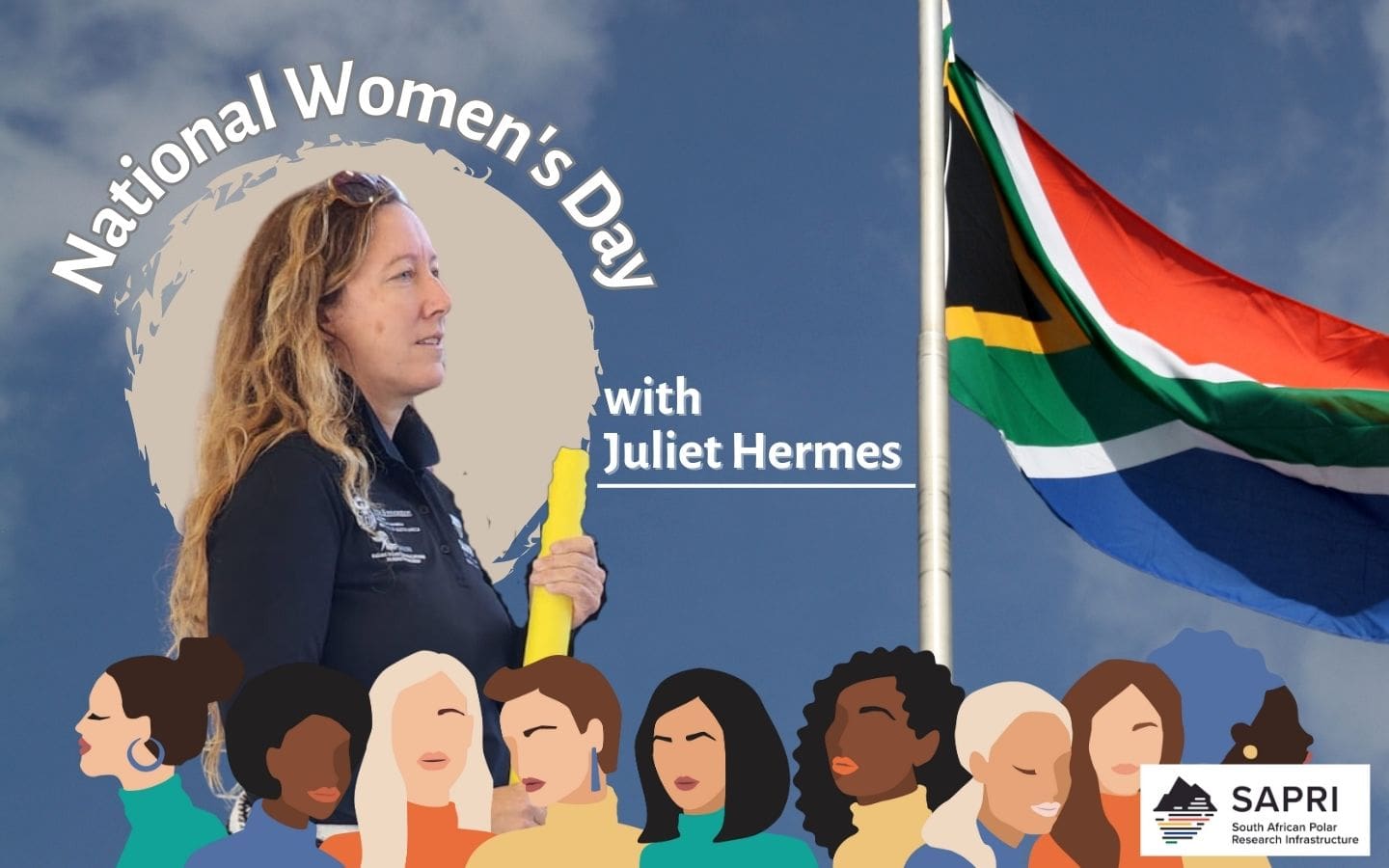
Prof Juliet Hermes is the Manager of the South African Polar Research Infrastructure (SAPRI), the Manager of the NRF- SAEON Egagasini Node, Honorary Professor at the Nelson Mandela University (NMU), Professor at the University of Cape Town (UCT) and heavily involved in a number of international programs and committees where she represent the fantastic work being done in South Africa and Africa as a whole (see list below). She is a passionate physical oceanographer who loves the ocean, a mom of two boys and her life is guided by the words of late Nelson Mandela:
“What counts in life is not the mere fact that you have lived. It is what difference we have made to the lives of others that will determine the significance of the life we lead.”
She makes a difference in her working environment through her collaborative nature and approachable demeanor.
“At the NRF- SAEON Egagasini Node I am supported by an incredible team consisting of biodiversity, modelling, observing and engagement specialists and of course administrative support. Together we advance our understanding of the marine offshore environment and our ability to detect, predict and react to global change through long term observations, modelling and research data”.
From Interim SAPRI Manager to SAPRI Manager
Juliet was initially involved in SAPRI as the South African Environmental Observation Network (SAEON) institutional champion and worked closely with Dr Tammy Morris and Prof Marcello Vichi in writing the original proposal and following business plan for SAPRI. As the manager of the NRF-SAEON Egagasini Node, which hosts the SAPRI LTO-Land and LTO-Ocean integrated facilities (IFs), she was made the interim manager of SAPRI in November 2021. Following discussions with the National Research Foundation (NRF), Department of Science and Innovation (DSI) and Department of Forestry, Fisheries and the Environment (DFFE) this role was then made permanent on the 1st of April 2023.
“It is a team effort with SAPRI and SAEON staff working closely together and the community also supporting us through the different user fora”.
Read more about the SAPRI IFs here.
Role of the SAPRI Manager
The role will change over time, the first 3 years will be overseeing the implementation of SAPRI – setting up the governance, employing the staff, overseeing the user fora groups, reporting to the advisory committees, the NRF and the DSI, working with DFFE, the South African National Antarctic Programme (SANAP) and the Antarctic Legacy of South Africa (ALSA) to integrate SAPRI and to maximize marine and polar sciences in South Africa. Understand the stakeholder needs and support the current community, whilst driving transformation and bringing in new stakeholders in terms of disciplines and institutes. A key aspect is also ensuring the sustainability of long term observations in the marine and polar space, and resolving long going issues between science and logistics.
Once the implementation has happened the role will be more in overseeing the operations, sourcing additional funding, driving transformation and continuing to work closely with DFFE and SANAP.
My expectations for SAPRI are for it to fulfill its vision: “to enable balanced and transformed research growth across the multiplicity of marine and polar disciplines, and to maintain and further expand the world-class, long-term observational research infrastructure and datasets already established within the South African marine and polar research environment.”
Juliet represent South Africa (and Africa) in the following international programs and committees:
- Ocean Decade task force to implement the Africa roadmap (read more here).
- Chair of the Climate and Ocean – Variability, Predictability, and Change (CLIVAR) Indian Ocean Regional Panel.
- Chair of the Indian Ocean Rim Association Academic Group (IORAG) and the node hosts the South African chapter for this.
- Ocean Decade working groups (on capacity development and adaptation).
- Executive committee member of International Association for the Physical Sciences of the Oceans (IAPSO).
- Vice chair on the Observation Coordination Group.
- Work closely with The Global Ocean Observing System for Africa (GOOS for AFRICA).
Read more: Second professorship for SAEON’s Juliet Hermes

Images and text supplied by Juliet Hermes.
Anche Louw, South African Polar Research Infrastructure, 09 August 2023.

by Rabia Mathakutha | Jun 19, 2023 | Antarctica, Current Event, Environment, Important Dates, International Days, Invasion Biology, Marion Island, Mice Eradication, Research, SANAP, SAPolarRI, SAPRI, Southern Ocean, sub-Antarctic, Uncategorised
On 19th of June, the world comes together to celebrate World Albatross Day, an annual event dedicated to raising awareness about these magnificent seabirds and the conservation challenges they face. World Albatross Day serves as a crucial platform to educate and inspire action to protect these iconic ocean wanderers. With their graceful flight and important ecological role, albatrosses deserve our attention and concerted efforts for their survival.
South Africa is a long-standing Party to the International Agreement on the Conservation of Albatrosses and Petrels (ACAP). The agreement was brought into existence on 1 February 2004. The day also falls on the date of the signing of the Agreement 22 years ago. ACAP has chosen the theme “Plastic Pollution” to mark the fourth World Albatross Day, to be celebrated on 19 June 2023. This follows the inaugural theme “Eradicating Island Pests” in 2020, “Ensuring Albatross-friendly Fisheries” in 2021, and “Climate Change” last year in 2022.
Albatrosses close to home
Multiple species of albatross are found across the Southern Ocean. This includes Antarctic, sub-Antarctic and subtropical waters. These albatrosses breed on sub-Antarctic and Antarctic islands including South Africa’s sub-Antarctic Marion Island. Marion Island holds significant breeding populations of four albatross species – the Wandering Diomedea exulans, Grey-headed, Light-mantled Phoebetria palpebrata and Sooty Phoebetria fusca. In addition to this, two other species of albatrosses have been seen ashore on Marion Island – Black-browed and Indian Yellow-nosed Thalassarche carteri. To read more about the “other” two species of albatrosses recorded from Marion Island as uncovered by one of our researchers Kim Stevens, click here.
The Challenges Facing Albatrosses
Albatrosses face a range of challenges that threaten their survival. One of the most pressing issues is longline fishing, where albatrosses can become accidentally caught on fishing hooks, leading to injury or death. Pollution, habitat destruction, climate change, and invasive species on breeding islands also pose significant risks to their populations. World Albatross Day sheds light on these challenges and promotes measures to mitigate their impact. The pressing threats to Albatrosses in the Southern Ocean include invasive species on breeding islands, most notably, the house mice on Marion Island. Introduced to Marion Island by sealers in the early 19th century, the house mice have been inflicting devastating impacts on the ecology of the island, including killing its native seabirds.
Conservation Efforts and Awareness
The Mouse-Free Marion Project is a registered non-profit company in South Africa, established to eradicate the invasive albatross-killing mice on Marion Island. The project was initiated by BirdLife South Africa and the South African Department of Forestry, Fisheries and the Environment (DFFE). Upon successful completion, the project will restore the critical breeding habitat of over two million seabirds, many globally threatened, and improve the island’s resilience to a warming climate. For more information or to support the project please visit mousefreemarion.org.
May 2023: Barbara Creecy, Minister of Forestry, Fisheries, Forestry and the Environment, confirms government support for the Mouse-Free Marion Project in her budget speech.
What can you do?
In keeping with this year’s theme for World Albatross Day “Plastic Pollution”, as an individual you can participate by reducing plastic pollution, organising or joining local beach cleanups, where you can help remove litter and prevent it from reaching the oceans, including minimising the use of single-use plastics. Education plays a vital role in driving positive change for albatross conservation. Increase your understanding of albatross biology, their unique adaptations, the threats they face, and the ecological importance they hold in marine ecosystems by reading some of these selected publications here. By raising awareness and fostering partnerships, we can work collectively to safeguard albatross populations and their habitats.
Let us unite in our efforts to protect these majestic ocean wanderers and ensure a future where albatrosses continue to grace our oceans for generations to come.
YOU CAN HELP SAVE MARION ISLAND’S SEABIRDS
Images: The Mouse-Free Marion Project (text added to MFM poster) and Antarctic Legacy of South Africa (ALSA)
Rabia Mathakutha, South African Polar Research Infrastructure (SAPRI DPS Node), 19 June 2023

by Rabia Mathakutha | Jun 8, 2023 | Announcement, Antarctica, Commemorative Days, Current Event, Discover, Environment, Important Dates, International Days, Marine Protected Area, Oceanography, SA Agulhas II

Preserving our precious marine ecosystems
Every year on the 8th of June, the world comes together to celebrate World Oceans Day, a global event dedicated to honouring and protecting our vast marine environments. This special day serves as a reminder of the significant role oceans play in sustaining life on Earth and the urgent need to conserve and restore their health. With over 70% of our planet covered by oceans, it is crucial to recognise the immense value they hold and take action to safeguard their future.
World Oceans Day is a day to appreciate the abundant biodiversity that thrives in these waters and reflect on the numerous benefits oceans provide, such as climate regulation, food security, and economic resources.
Event of interest on 8 June 2023
Significance of World Oceans Day
The delicate marine ecosystems face numerous threats, including pollution, overfishing, habitat destruction, and climate change. World Oceans Day emphasises the need to protect and restore these ecosystems through sustainable practices.
Promoting conservation efforts
What can you do?
Individuals can participate by organising or joining local beach cleanups, where they can help remove litter and prevent it from reaching the oceans. By minimising the use of single-use plastics and making environmentally conscious choices, individuals can also contribute to reducing pollution in our oceans.

Recreational diving with a purpose. Cleaning the ocean one dive at a time. Image credit: Thando Mazomba.
Take-home message
World Oceans Day is an annual celebration that reminds us of the vital role oceans play in sustaining life on Earth. It urges us to recognise the urgent need to protect and restore marine ecosystems through sustainable practices, education, and policy changes. By coming together on this special day, we can create a collective voice for ocean conservation and work towards a future where our oceans thrive, benefiting both present and future generations. Let us celebrate World Oceans Day and commit to preserving the precious wonders of the deep blue.
On social media
Rabia Mathakutha & Anche Louw, South African Polar Research Infrastructure (SAPRI DPS Node), 08 June 2023

by Ria Olivier | Oct 18, 2022 | Announcement, Antarctica, Important Dates, Meetings, News, Research, SANAP, SCAR, Science, Southern Ocean
This is the first announcement for the Scientific Committee on Antarctic Research (SCAR) Biology Symposium 2023 in New Zealand.
Conference Website

Will you be attending/presenting a paper? Let ALSA know!

by Ria Olivier | Jun 19, 2022 | Announcement, Environment, Important Dates, International Days, Marion Island, Prince Edward Islands, Southern Ocean, sub-Antarctic
World Albatross Day was inaugurated by the Agreement on the Conservation of Albatrosses and Petrels (ACAP) in 2020 and is now celebrated annually on 19 June.

I have spent the past eight years in close contact with albatrosses, but have realised that many don’t really know of their existence and/or importance. World Albatross Day is a very important initiative to highlight the wonders of these special birds, as well as the threats they face on a daily basis.
Stefan Schoombie, a PhD in Biological Sciences at the University of Cape Town. His research focus is on the behaviour of seabird species.
How did you end up working on seabirds in the sub-Antarctic?
After finishing a BSc (Hons) at the University of KwaZulu-Natal in 2012, I had the opportunity to overwinter on Marion Island as part of the 70th overwintering expedition. During this expedition (2013-2014) I worked as a field assistant (for Fitzpatrick Institute of African Ornithology), monitoring seabird colonies, and gathering data for my Master’s degree.
I was fortunate enough to join several more expeditions to Marion Island between 2015 and 2019, this time gathering data towards my PhD degree, while performing other research activities with the ultimate goal of seabird conservation.
Read more about Stefan’s research and publications here!
How would you describe your first encounter with an albatross?
The first albatross I encountered was a Wandering Albatross, sitting on a nest on Marion Island. The sheer size of the bird was unbelievable, but the fact that they are so calm in our presence was incredible. Adult albatrosses breeding on sub-Antarctic Islands have no natural predators while on land, and thus they are not as scared of us as most land birds that we are used to. However, the most amazing thing about a Wandering Albatross is when they open their wings and reveal a three-meter wingspan.

Swartkops hut (on the Western side of Marion Island) and hundreds of Wandering Albatross nests.
The different Albatross species on Marion Island are each unique in their own way. How would you describe the uniqueness of each species?
 WANDERING ALBATROSS
WANDERING ALBATROSS
By far the most impressive of the albatrosses when you are up close. I tracked the fine-scale movements of these birds for my PhD degree, resulting in a lot of close encounters with them. We also monitored hundreds of breeding birds, as part of a long-term monitoring program. I was fortunate enough to spend enough time on Marion Island to see albatross chicks grow up from tiny chicks up to the point where they were large and strong enough to fly off into the vast Southern Ocean skies. Part of my research included the use of bird-borne cameras, where we were able to see what the birds experienced from their point of view, giving me a new-found respect for the incredible flying capabilities of these birds.
 SOOTY (OR DARK-MANTLED SOOTY) ALBATROSS
SOOTY (OR DARK-MANTLED SOOTY) ALBATROSS
These were the first albatross species I worked with, while gathering data for my MSc. Part of my research included setting up a long-term monitoring colony of Sooty Albatrosses. This included marking a large number of birds with unique numbered rings, for identification, which is particularly challenging seeing that these are cliff-nesting birds. One of the most memorable things about Sooty Albatrosses is their calls, which echo along the cliffs as they call to their partners. They also perform a synchronised flight as part of their courtship which is something to behold.
 LIGHT-MANTLED (OR LIGHT-MANTLED SOOTY) ALBATROSS
LIGHT-MANTLED (OR LIGHT-MANTLED SOOTY) ALBATROSS
These birds are very similar to the Sooty Albatross and I conducted the same research as with the Sooty Albatrosses. Light-mantled Albatrosses are more common in the southern parts of the Southern Ocean, with Marion Island being their northernmost breeding ground. Thus, their population size is quite small on Marion and the birds are a bit more skittish than other species.
 GREY-HEADED ALBATROSS
GREY-HEADED ALBATROSS
These are incredibly beautiful birds that are very photogenic, but their cliff-nesting behaviour makes them difficult to get close to. Apart from a small monitoring colony, we normally don’t come close to these birds and only perform annual counts with binoculars. However, in 2015 increases in attacks from invasive house mice resulted in us monitoring them much closer. Grey-headed Albatrosses breed in dense colonies which is like a very noisy, busy airport terminal, with birds landing and taking off all around you.

BLACK-BROWED ALBATROSS
Marion Island is not a breeding ground for Black-browed Albatrosses, but there is one vagrant individual that breeds with Grey-headed Albatrosses from time to time, resulting in hybrid offspring.
Seabirds of the sub-Antarctic are under threat due to unsustainable fishing practices, climate change, and invasive species. Currently, on Marion Island, the invasive house mice are threatening the albatross species living and breeding on this sub-Antarctic island. The Mouse-Free Marion Project (partnering with BirdLife South Africa and the South African Department of Forestry, Fisheries and the Environment) aims to remove the mice from Marion Island in 2024.
YOU CAN HELP SAVE MARION ISLAND’S SEABIRDS
View the ACAP Media Release for this Year’s Albatross Day
Anche Louw, Antarctic Legacy of South Africa, 19 June 2022.
Images: Stefan Schoombie.

by Ria Olivier | Jun 16, 2022 | Announcement, Antarctica, Environment, Gateway cities, Important Dates, News, Women in Science

Youth Day 2022 Theme: Promoting sustainable livelihoods and resilience of young people for a better tomorrow.
The call to action will be for youth to forge resilience and pursue opportunities for a sustainable livelihood, today and in the future (South African Government).

Rudzani Silima, a South African National Antarctic Programme (SANAP) graduate, is one of the founding members of the Antarctic Youth Coalition. She is a custodian for South Africa’s gateway city to Antarctica (Cape Town) and “advocating for Antarctica’s future, by promoting sustainable communities and connected urban identities” (AYC).
The five gateway cities to Antarctica:
- Cape Town (South Africa)
- Hobart (Australia)
- Christchurch (New Zealand)
- Punta Arenas (Chile)
- Ushuaia (Argentina)
Who is the Antarctic Youth Coalition?
How did Rudzani become one of the founding members?
Want to know more about Rudzi? Click here!
The Antarctic Youth Coalition is an initiative of the Project: Antarctic cities and the global commons: Rethinking the Gateways.
Read more about the Antarctic Cities Project
Anche Louw, Antarctic Legacy of South Africa, 16 June 2022.
